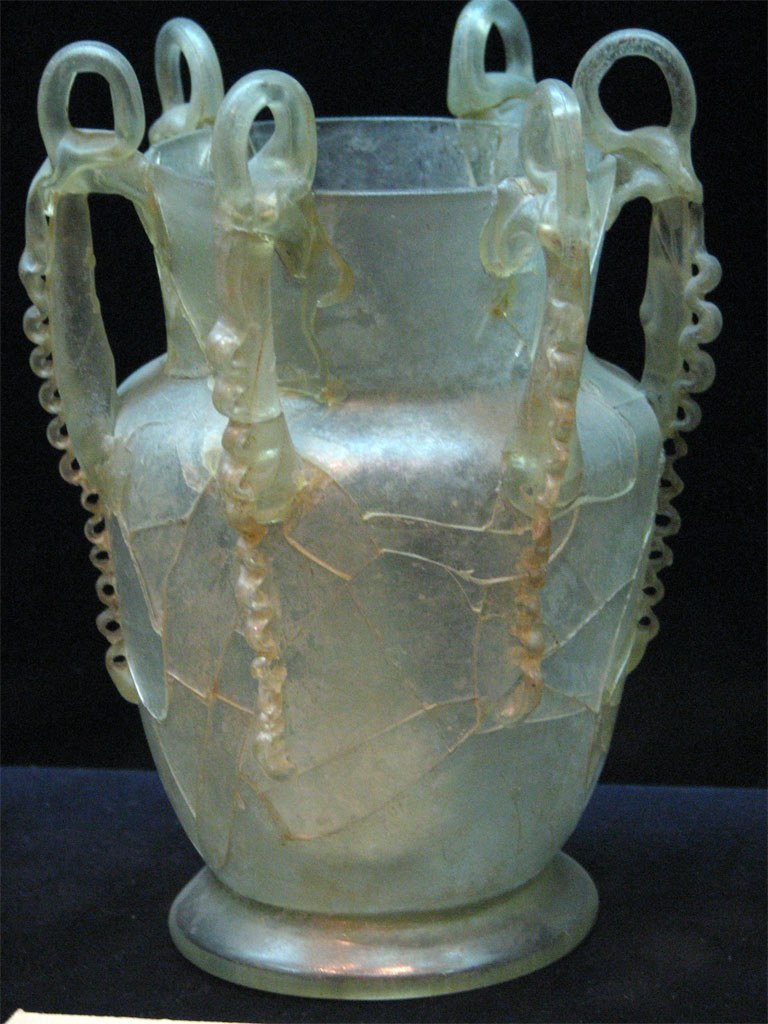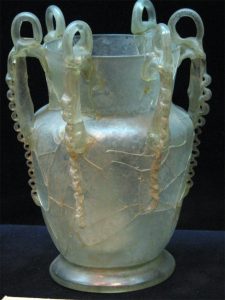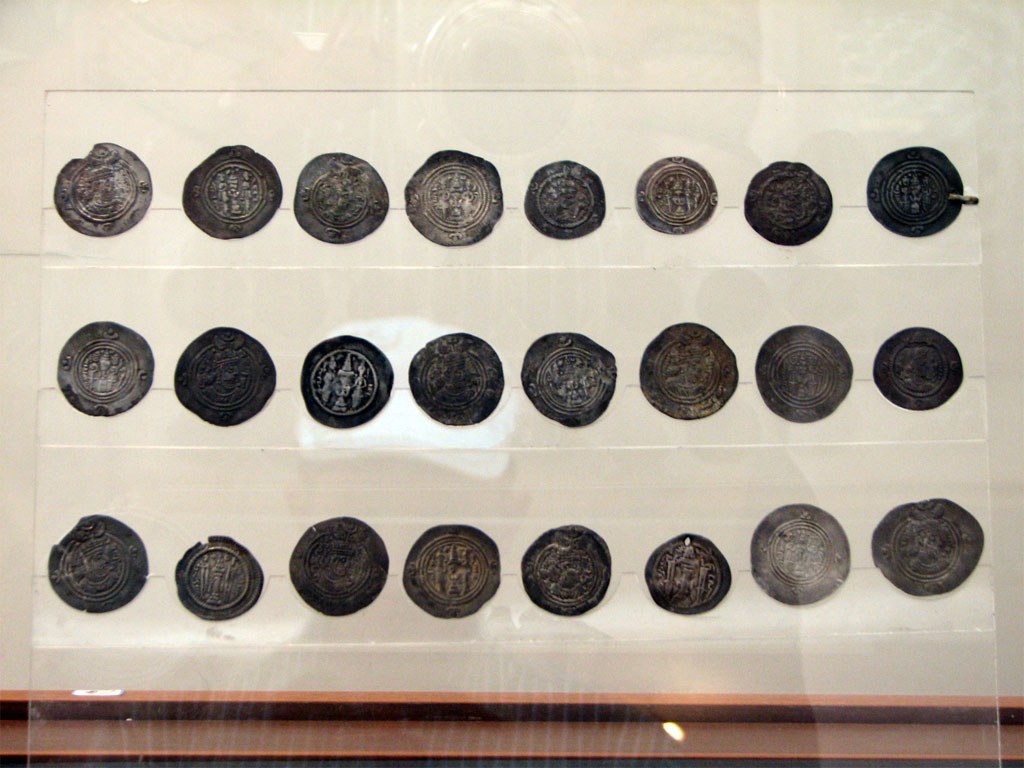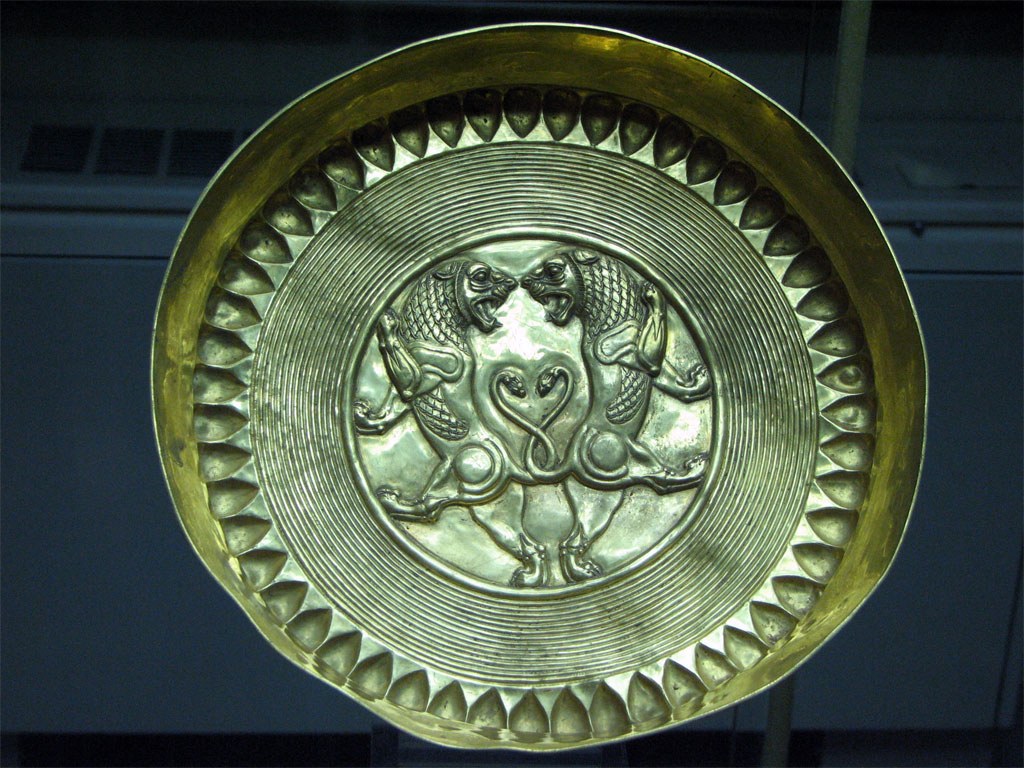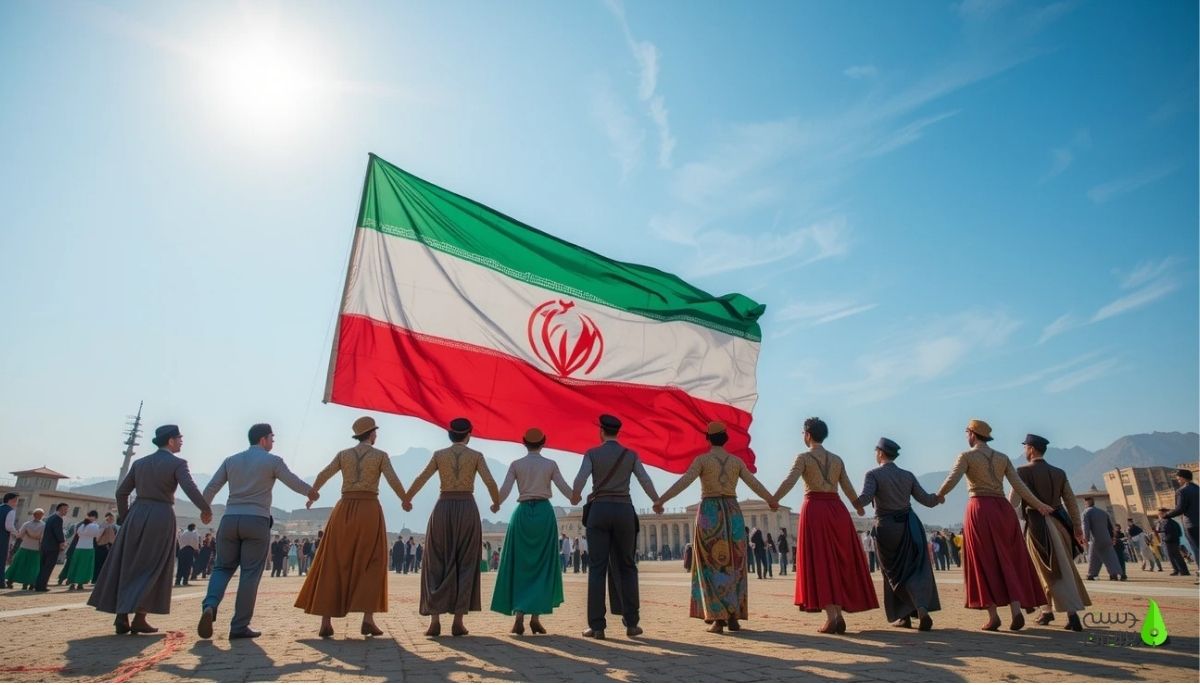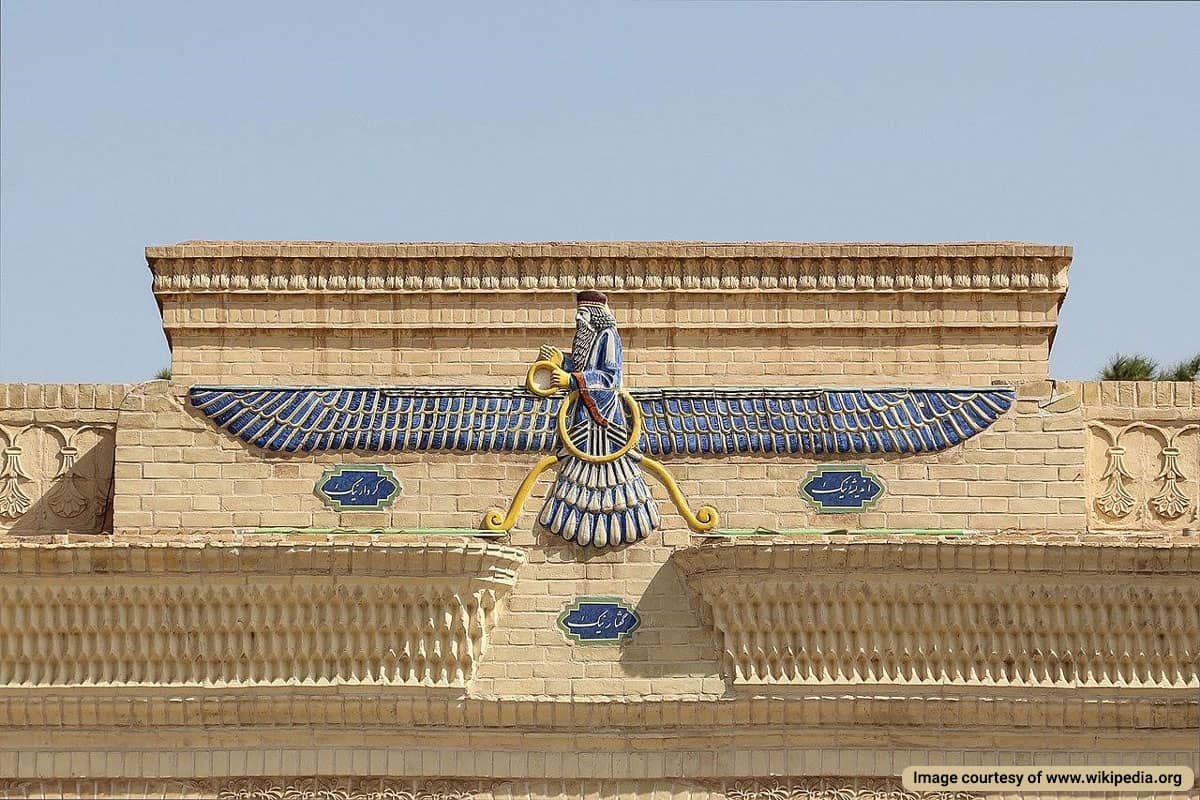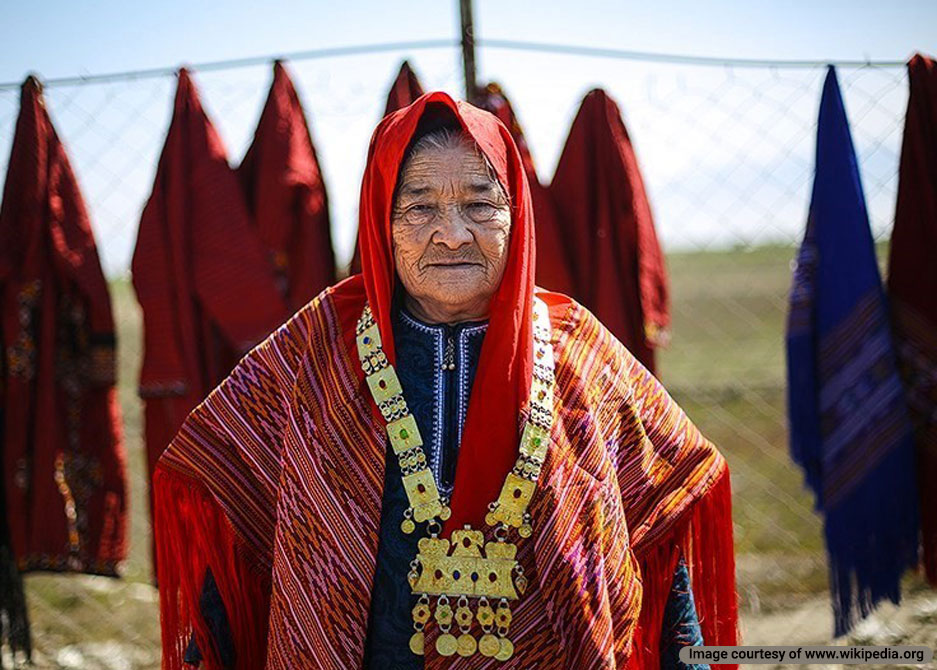The people in the Iranian plateau had always shown their skill in cutting and engraving glass. Archaeologists have not identified any site inside today’s Iran as an ancient center for glass working in Iran. Therefore, there is not sufficient information about the evolution of this industry in Iran. Some glass-made objects like light green beads and bracelets bearing some patterns in contrasting colors have been found in very old graves in Luristan province.
Of course, Elamites could make translucent tubes out of glass paste in 1250 B.C. These tubes have been discovered as arranged within window frames to let the light in near the ziggurat of Chogha Zanbil, southwest of Iran.
Certain techniques of glass making are reflected in some works like fluting cuts in Lybieh’s works, 5th century B.C. According to the archaeological findings in Persepolis, at around the same time, under Achaemenians, the vessels were decorated by protruding and engraving techniques.
Before the 2nd century B.C., glass making industry had long started and flourished all along the eastern Mediterranean from the Phoenicia coasts to Crete Island. Since the 2nd half of the 1st century B.C., the very center of this industry moved westward up to Italy and the regions beyond it.
As a result of a war between the Parthians and Romans in 92 B.C., the industry entered western Iran. New techniques acquired together with inherited Achaemenian traditions produced a substantial trend in glassmaking.
Glass Working in Iran during the Sassanian Period
The most interesting objects among Sassanian glassworks found in the northwest to the southwest of Iran are the ones decorated by cutting wheels. With deeper cuts in comparison to Roman glassworks, the Sassanian glass objects were more attractive and well-known. Within the Sassanian Empire, there were some centers for glass making like southern Mesopotamia, Ctesiphon, Gilan province, western Alborz, Susa, and Rey.
Embossed patterns and kiln-fired glass works attracted lots of attention under Sassanians. Many of the glass vessels made in various regions from Europe to Japan between the 3rd and 7th centuries A.D, followed the Sassanian traditions. Of course, Roman traditions were used by Iranians, but in pure Iranian forms.
Glass Working during The Middle Ages
In the early post-Islam period, no sudden change occurred in the glassworks of Iran. At times, some functional works were made of green impure glass. Little by little, forms evolved and varied until the Seljuks’ era when some common production processes were totally abandoned.
Blowing in mold almost became the dominant technique to produce the majority of glasswork. There were three simple methods used in glass making of which engraving by wheel was the most important one implemented from an artistic point of view.
Then, in the early Abbasid era, engraved glassworks were created by three similar but different technical methods: 1) engraving to shape embossed patterns; 2) direct cutting on embossed patterns, and 3) a combination of both two methods.
Decorations were oval patterns and embossed knobs done mostly on flasks, decanters, ewers, and especially perfume holders. Sometimes, silver mixtures were also used to stain yellow color on glassworks in Egypt, Damascus, and Iran.
During the Seljuks and Mongols’ invasions of Iran, glassworks did not go through a flourishing process. In the history of glassmaking, gilded and enameled glassworks were created in some centers within Syria.
Glass Working during Safavid Period and After That
Syrian artists and artisans had to emigrate to Samarqand as a result of Timur’s invasion. The general decline in the 15th century’s glass making industry paved the way for European-made glassware to penetrate Syria and other markets along the eastern Mediterranean.
During that period, it seemed that it was Armenians who imported European glassware to Tabriz and then sent to other towns and cities inside Iran. Instead, various kinds of silk cloths were exported to Europe via the same route from Iran.
Iran, then, was a good customer for Europeans, especially Venice-made, mirrors and glass-made vases used as the base of water pipes.
Shiraz was the center of good quality glassware in Iran. In the workshops of Shiraz, various kinds of bottles, glasses, gooseneck sprinklers, etc were made. They were often transparent and colorless. Shiraz and later Qom were the centers of glass working in Iran until the 20th century and went on to make bottles. They were the only glass-made items traded during the mentioned period.






